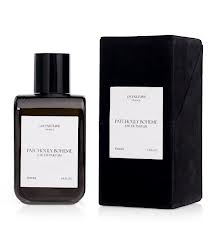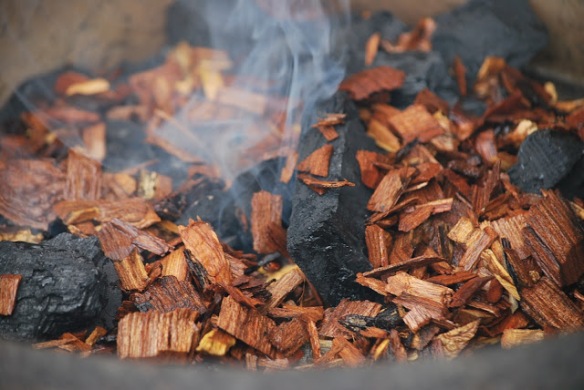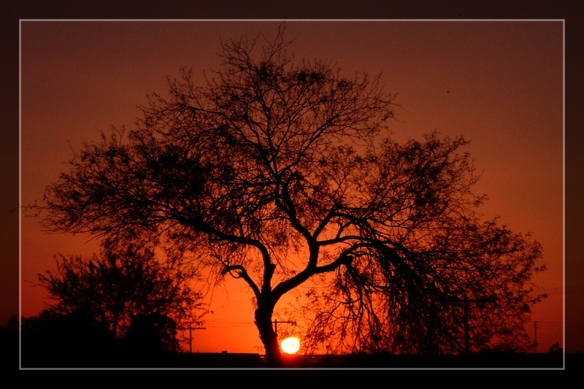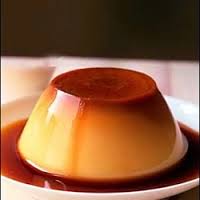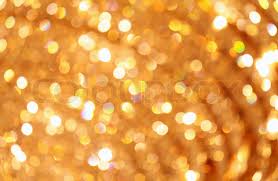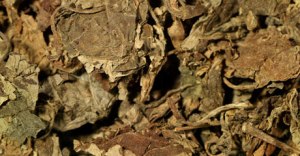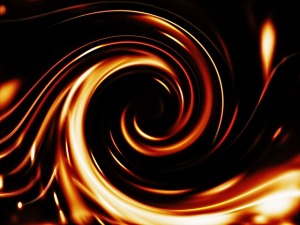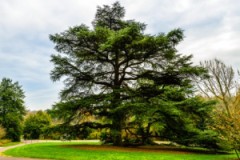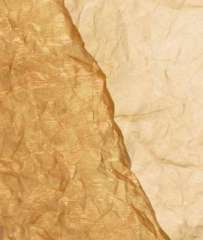Violette Fumée is a fresh, citric floral musk from Mona di Orio that was posthumously released in 2013 as part of her Nombres d’Or Collection. Madame di Orio was a very talented perfumer who died tragically at the age of 41 in 2011 from post-surgical complications, and Violette Fumée was her last creation. It was originally made as a personal, private gift to her business partner and the company’s co-founder, Jeroen Oude Sogtoen, based on his favorite notes. He decided to release the scent publicly in 2013 as an homage to her.
Violette Fumée is described as an “eau de parfum intense” on the Mona di Orio website, and also as an “Oriental Balsamic Floral.” The official description for the fragrance is interesting, as it discusses some elements that are not actually included in the accompanying note list:
With the creation of Violette Fumée, Mona composed the melody of my favorite passions, memories and materials.
With flirty florals like violet and rose fumed with pipe tobacco, the exquisite smoothness of cashmere and suede, and deep resinous undertones, this warmly smoldering scent evokes my sensorial love for luxury, and makes me feel, dream, travel and remember.
Revved at the start, crisp, fresh notes of herbal lavender and sparkling bergamot pair with inky oakmoss and get a twist as the scent unfolds into the elegance of vetiver and clary sage.
The shy violet and iconic rose develop into a powdery and gourmand fume and then ramp up as spicy and savory notes of aphrodisiac saffron and smoky bois de gaiac communicate with the florals and begin to ignite.
The smoldering continues as resinous opoponax, myrrh, and musky cashmeran dive slowly into an intense velvety embrace.
Top notes: Mediterranean Lavender, Bergamot from Calabria, Oakmoss from the Balkans
Heart notes: Violet flowers and leaves from Egypt, Turkish Rose, Vetiver from Haiti, Clary Sage
Base notes: Opoponax and Myrrh from Somalia, Cashmeran.
As you can see from the description, saffron, tobacco, and guaiac wood are mentioned, but they do not appear on the actual list of notes. I detected small, minute traces of the last two notes, but not the saffron.
Violette Fumée opens on my skin as a very cool citrus, aromatic, and floral bouquet. There is crisp, chilled bergamot and pungent, herbal lavender, followed by dewy, metallic violets, its crunchy green leaves, and tendrils of light, sheer smoke. The violets smell slightly dewy and liquidy, but primarily carry the aroma of its crunchy, fuzzy, peppered leaves. There is a metallic sharpness that violets can sometimes demonstrate, but the note is also accentuated here by clean, synthetic, white musk. Touches of clary sage waft about, emitting a slight soapiness amidst the plant’s lavender and leathery undertones. Vetiver trails behind it, smelling both green and mineralized.
A few minutes later, another green note arrives on the scene: oakmoss. Like the vetiver, it initially has a mineralized aspect and doesn’t smell plushly green. Yet, it is not completely the grey, fusty, dusty, more pungent version, either. It lies somewhere in-between, supplemented by the bergamot to prevent the mosses from feeling too austere. As a whole, Violette Fumée is a visual palette of green, yellow and purple, with small streaks of black. It is initially a very cool fragrance in temperature as well, thanks largely to the chilliness of the crisp bergamot and the violet’s floral liquidity.
The black smoke that ties the aromatic, citric and floral elements together is very muted on my skin. It is a subtle touch which I wish were far stronger. Interestingly, the first time I wore Violette Fumée, the smokiness was much more apparent than on my two subsequent tests and I have to wonder if temperature was responsible as it was far cooler that first time around. Yet, even so, if I were to quantify the smoke on a scale of 1 to 10 with 10 being the highest, it was a 3 in my first test and perhaps a 1.5 at best on subsequent occasions. In short, rather minor as a whole. Even more minor is the tobacco undertone that I detected in one test, but which never subsequently reappeared.
Violette Fumée slowly shifts, though by very fractional degrees. After 10 minutes, the fragrance feels softer and warmer. The bergamot’s zesty briskness turns sweeter, while the lavender and clary sage lose some of their sharp, herbal pungency. The violets grow stronger, their scent feeling more floral now than just the crunchy, piquant green leaves. Their dewiness and metallic edge fade away, though the clean musk remains. In fact, the latter’s synthetic sharpness is consistently intertwined with the bergamot note, resulting in a clean lemoniness that I think has a very harsh edge. It continues largely unabated until the very end of Violette Fumée’s development on my skin, and it is the thing that I like the least about the perfume.
Violette Fumée begins to turn abstract and wispy 45 minutes into its development. There are fluctuating levels of greenness, but the smokiness has faded away, along with the lavender and clary sage. The oakmoss feels almost nebulous, more like an abstract suggestion than anything clearly delineated. In fact, many of Violette Fumée’s notes lose their distinct shape, except for violet and the lemony musk, and the perfume feels very sheer.
What appears instead is a generalized, rather amorphous woodiness. Neither the guaiac nor the cashmeran are detectable in any individual way, but they blend in with the other notes to create a sort of nebulous, “woody musk” cocoon in which the violets are nestled. The cashmeran is noticeable mostly through the growing touch of creaminess in Violette Fumée’s base, almost like shea. By the 90-minute mark, the perfume is primarily a fresh, violet floral scent with strong bergamot musk and a touch of sweetness, all resting upon a thin base of creamy woods. A hint of vetiver lingers in the background, but there is no smokiness, very little sense of oakmoss, and only a suggestion of crisp greenness. The perfume now lies just an inch, at best, above my skin.
As a whole, Violette Fumée is a very airy, lightweight fragrance with soft, quiet sillage. Three smears amounting to 2 small spritzes from an actual bottle gave me 2 inches in projection. Applying a larger quantity did not significantly change that number. By the end of the second hour, the perfume is a skin scent on me and feels very thin.
At the start of the 3rd hour, Violette Fumée is a fresh, light, largely abstract floral with a vague suggestion of violets, followed by sharp, synthetic, lemony musk, all atop a base of generic woodiness with creaminess. As a whole, the perfume feels very clean and has something of a soapy nuance, thanks to the fabric softener musk. The impression of greenness has completely disappeared, but a slight powderiness has taken its place.
Violette Fumée remains largely unchanged for hours to come. The rose makes a quiet appearance at the end of the 6th hour, but it feels thin, pink, and very wan. The general bouquet is now primarily an abstract “floral” accord dominated by citric cleanness and a touch of vague woodiness. Even the creaminess in the base feels more muted and thin. In its final moments, Violette Fumée is a blur of something floral and clean. All in all, the perfume consistently lasted between 10 and 11 hours, largely because my skin holds onto clean musk synthetics like the devil.
Violette Fumée has generally received very good reviews, both from bloggers and on Fragrantica. The Non-Blonde writes, in part:
Violette Fumée is a gender-bending fragrance. Smoke and flowers, delicate tendrils and petals against musky creamy wood. Pipe tobacco that has an almost fruity core, a rich texture with a modern sensibility. I wanted to describe the dry-down as a purple cloak, but that’s a bit over the top, while Mona di Orio created Violette Fumée as a wearable and sophisticated personal fragrance for a man with an impeccable urbane taste.
The musky dry-down is of the slightly fruity kind, round, rich and satisfying. It still has those purple fumes surrounding it, and I feel an urge to lose myself in this mist. Despite all of that and the high concentration of the juice, Violette Fumée is not a heavy perfume. Applied moderately, it’s somewhere between a skin scent and a fashion accessory that you notice but doesn’t steal the show from your words.
For The Scented Hound, Violette Fumée was also a lovely experience, one which reminded him of a “page from a 19th century botanical illustrative leather bound book.” He writes, in part:
Violette Fumee opens with the most beautiful lavender and bergamot combination; it’s herbal and refreshing in a creamy comforting way. After a few minutes, the fragrance starts to warm and become deeper as a beefy oakmoss emerges from the bottom that envelopes and seems to fold over the lavender. After about 10 minutes or so, the violet seems to make an appearance from the edge of the fragrance. I know this is going to sound strange, but it’s appearance is like prairie dogs popping their head out of the ground. What I mean is that the violet doesn’t come out at once, but seems to pop in and out until eventually you feel like you are surrounded by violets tinged with rose. Violette Fumee at this point still retains its creaminess but it becomes slightly brighter without becoming sheer. What I love about this is that the herbal aspects of the fragrance keep this from becoming too floral and pretty which allow Violette Fumee to retain a substantive elegance. After some time, the myrrh and opoponax emerge from below and a slight suede provides for a beautiful finish to this multi-faceted fragrance.
On Fragrantica, most people seem to adore Violette Fumée, with some comparing it to Chanel‘s No. 19 and Cristalle. For example, “kxnaiades” writes, in part:
Violette Fumee is like no other violet scent I’ve come across. I thought Lez Nez’s Unicorn Spell and CDG Stephen Jones were different and unique takes on violet. Mona di Orio’s Violet Fumee pretty much blazes past these and leaves them in her smoke, in terms of originality. This really has to be sat down with and taken time with to enjoy, it’s complex and does not reveal it’s entirety in the first half hour. I agree that it’s opening reminds me alot of Cristalle and the like. Cristalle opens cold and unreachable on me, just like Violette Fumee did. I know perfectly well what clary sage smells like now, the leathery note was clearly in the icy herbal opening. However, making friends does take time and I was patient. My faith was well-placed and with time, the chill air left and I was greeted with a fresh violet with its leaves still green and perky, resins and woods. I much much prefer the warmer drydown to the opening so thankfully this lasts very well on my skin with a single spritz. This is not an easy scent to like, but neither were Cristalle or No. 19 for me intially, but now is a different story from then. Violette Fumee is not for those looking for a sweet violet pastille scent. It’s a decidedly unisex take on violet with a bold entrance and uncompromising quality I’ve come to expect from Mona di Orio. This is no shrinking violet.
For “Mick Trick,” Violet Fumée didn’t remind him of any Chanels but he also really liked the scent, though he does note that the “fumee” aspect was barely noticeable on his skin. He writes, in part:
Violette Fumee opens with a fresh sparkly triumvirate of green violet leaf, a splash of golden effervescent honeyed bergamot and subtle herbal lavender. Towards the heart the violet flower builds, an ultra-fine polished smooth powderiness is present but checked and never overwhelms, as opoponax adds resinous sweetness and a creaminess to the violet, forming the languorous sinuous and slightly shimmering heart of the fragrance. There’s also a very subtle tobacco note appearing at the beginning of the drydown, although I noticed this only on the second full wearing. At late drydown the violet flower recedes and watery violet leaf endures with a soft suede musky aspect (must be the cashmeran).
As others have noted the ‘fumee’ aspect is noticeable by its absence. Although I experienced a couple of phantom smokey tendrils that are gone as soon as I noticed then. It lays close and after around 4 hours is really a skin scent, however I experienced +12 hours longevity, on fabric it’s also +next day material. Not bad at all. There is a sweetness to VF, but it always retains a freshness and never threatens to become cloying. I’ve worn it now three times in the last four days, it’s got a subtle luxurious allure that keeps me coming back for more, I like it very much.
There are only two negative reviews for the fragrance:
- Awful, smoky and cheap, totally synth. [¶] Crazy price, sillage bad, longevity bad. [¶] Thumbs down.
- The drydown smells on me like Earl Grey tea leaves.
Violet Fumée is not cheap at $330 or €230, though the bottle is a 100 ml. I don’t think it feels like an eau de parfum at all, something that one Fragrantica commentator also mentioned. For me, the perfume is very over-priced for what it is, and I don’t find its quality to be impressive. The bergamot musk dominated much of the drydown on my skin, which is perhaps why that last quote from Fragrantica mentions “Earl Grey tea leaves,” but it is the sharpness of the synthetic that I found to be particularly objectionable. For $330, I’d like a lot more than citric fabric softener emanating from my skin — and a sheer, wispy, thin, largely abstract floral-woody-musk isn’t it.
In all fairness, I despise clean, white musk — in anything — and other people don’t have the same issues with the note. They also are not so sensitive to synthetics which my skin amplifies quite a bit. Plus, as I’ve tried to make clear, I’m in a distinct, tiny minority regarding this scent. Everyone else seems to be a fan. So, if you love violet fragrances and clean, fresh florals as a whole, then you may want to give Violette Fumée a sniff.













